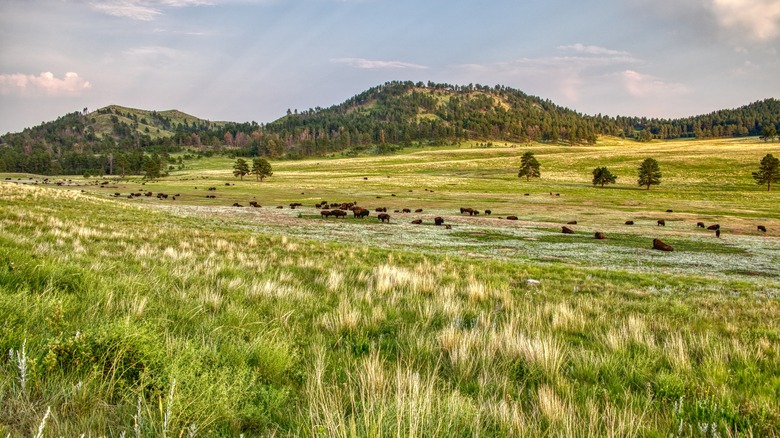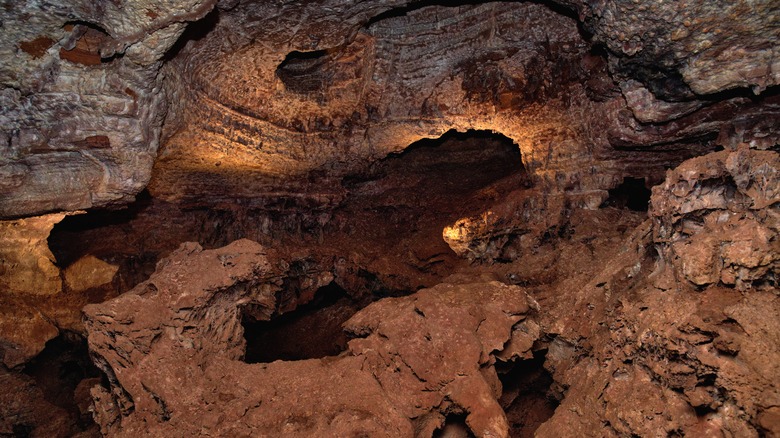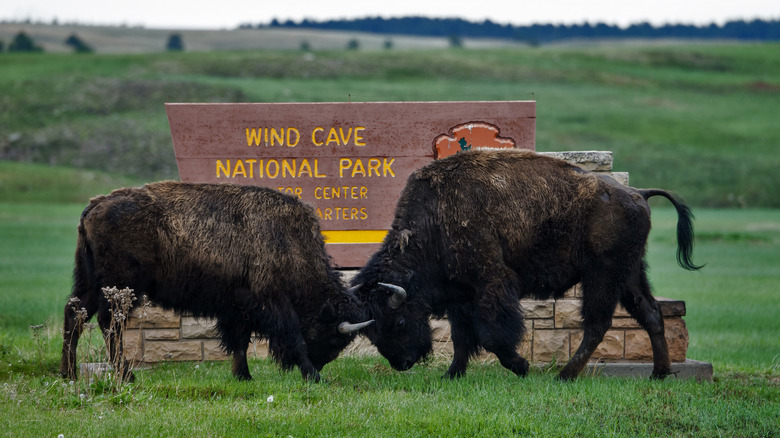South Dakota's National Park With Caverns, Wildlife, And Scenic Landscapes Above And Below
South Dakota is well known for its scenic landscapes overflowing with flora and fauna. In fact, there are six National Park Service sites in this expansive state, featuring everything from Mount Rushmore to the awe-inspiring Badlands National Park. If ever there was a place to go to disconnect from the drudgery of daily life and connect with nature, South Dakota would be it. With that said, South Dakota's Wind Cave National Park offers travelers the unique chance to explore not only the 150 miles of mapped passageways through a breathtaking cave but also 33,970 acres of forest and prairie land. Established as a national park in 1903, Wind Cave was the first cave to earn the designation, marking its importance as a geological find. As of 2023, Wind Cave still ranked as the world's seventh largest and the United States' third longest cave system.
The park is a great place to explore miles and miles of underground passageways and view wildlife. Animals such as bison, elk, coyotes, mountain lions, prairie dogs, and pronghorn are all known to make this expansive region their home. Wind Cave isn't just a national park, it's a place to explore the world above and below the surface.
Travel below the surface of Wind Cave National Park
What makes Wind Cave so unique is its intricate boxwork formations, honeycomb-like calcite structures created when limestone erodes. 95% of all known boxwork existing in the world is located in this very cave. The name of the cave comes from the Indigenous Lakota people, who tell of a spirit lodge existing beneath the earth. They named it Maka Oniye, which translates to "breathing earth," due to the way wind blows out of the cave's entrance. Today, visitors can take several different cave tours to explore the fascinating world below. Start with the beginner-friendly Garden of Eden Tour, which focuses on basic cave formations and explores shorter routes. The Natural Entrance Tour is the second easiest and allows travelers the chance to visit the natural entrance of Wind Cave. The Fairgrounds Tour takes visitors through the cave's upper and middle levels and is the most challenging walking tour available.
For the more adventurous folk, the Candlelight Tour takes visitors through less developed sections of the cave by candlelight, the way early explorers experienced the area. For those who enjoy getting down and dirty, the Wild Cave Tour is the perfect option. Visitors on this tour will explore the cave mostly on hand and knee, climbing through undeveloped areas of the cave. Both the Candlelight Tour and Wild Cave Tour are only available during summer, so plan accordingly. Unfortunately for those who love solo adventures, cave access is by ranger-guided tour only. Advanced tickets may be purchased through Recreation.gov and regularly sell out the day of. Purchasing same-day tickets is an option, however, arriving at the cave to buy them before it opens is highly recommended. Beginners should also peruse this guide to spelunking before the tour.
Exploring Wind Cave National Park's trails and plains
For those who prefer an above-ground experience, Wind Cave National Park is filled with tons of great options for exploring the outdoors. Popular attractions like the Rankin Ridge Trail provide panoramic views of the Black Hills, while the Prairie Vista Trail offers a closer look at the cave's entrance and surrounding wildlife. Follow Rankin Ridge Trail to the Rankin Fire Tower for 360-degree views of the area and its wildlife. For a longer hike, try Lookout Point and Centennial Trail, where you may come across bison, prairie dogs, and other critters. As with any outdoor excursion, remember to leave no trace behind, and don't pet the wildlife — no matter how cute they may be.
Throughout the park, rolling prairies are dotted with flora such as purple coneflowers, ponderosa pine, and bluestem grass. Bison roam freely along the open plains, and prairie dogs pop their heads up from their hideaway holes. Birdwatchers can enjoy spotting different species such as hawks, bald eagles, and sparrows. If you're unable to take a cave tour, there is still the option to see the cave's natural entrance. Stroll along the Prairie Vista Nature Trail from the visitor's center for about two minutes to reach the entrance. After your trek, you'll see why a visit to one of the Midwest's best national parks is a must for any nature lover.


